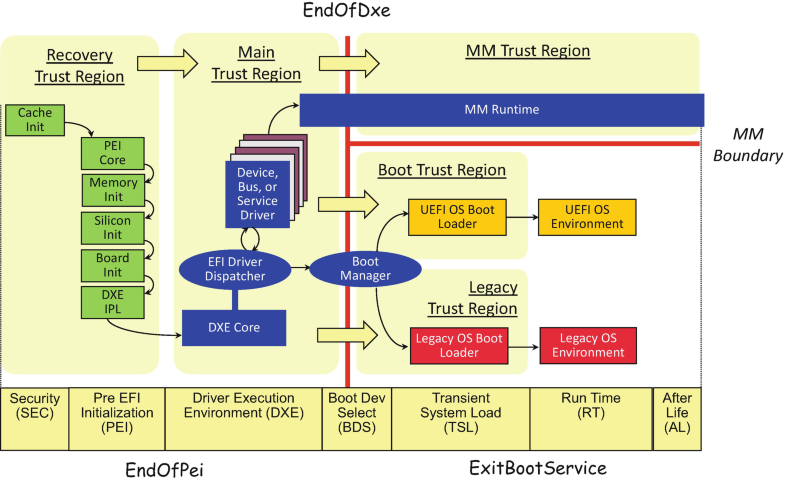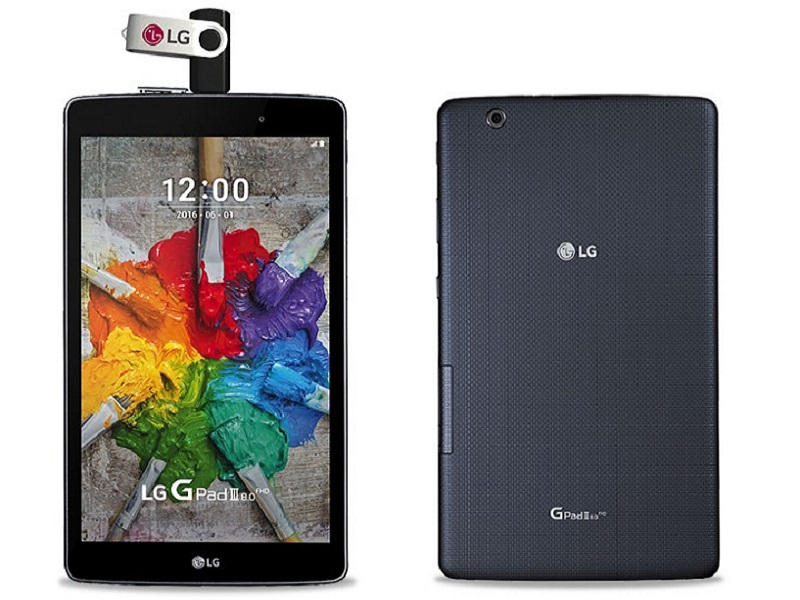Which Of These Best Describes The Difference Between Ports And Slots
In modern systems the performance difference between the CPU and main memory has grown so great that increasing amounts of high - speed memory is built directly into the CPU, known as a cache. These ports are not 'integrated' because they are not connected directly to the motherboard. On the typical desktop PC, a number of slots are provided on the motherboard (see image above) for attaching devices. One use of these slots is to expand or add to the ports available for external devices, as noted above.
Plug
The plug is part of a cable that connects to a port. The plug always connects to something else (e.g., a jack or port). For example, the most common plug is the power plug that connects your computer, monitor, and other devices to a power source. The picture is a U.S. desktop power cord with a male plug end that connects to the wall socket and female plug end for the computer or monitor.
 Note
NoteIn our example of a power cord plug, this plug is different in different countries around the world.
Cable and cord
A cable or cord is one or more wires in a plastic covering that allows for the transmission of power or data between devices. The picture is an example of a Cat 5 network cable. See our cable definition for a list of types of cables used with computers.
Wire
A wire is a single strand of metal (e.g., copper) or optical fibers capable of transmitting power or data from one area to another.
Connector
A connector is the unique end of a plug, jack, or the edge of a card that connects to a port. For example, all desktop computer expansion cards have a connector that allows them to connect in a slot on the motherboard. When referring to cables, the connector is the end of the cable that connects into a port. For example, the end of a USB cable has a connector that allows it to connect to a USB port.
Port
The port has either holes or a slot that matches the plug or card connected to the port. The picture is a computer PS/2 port for a keyboard and mouse with a PS/2 connector to connect to the computer.
NoteThere are also software ports. For example, port 80 is a network port that allows HTTP traffic on a network.
- See our port definition for a full listing of computer ports.
Jack
A jack is similar to a port and is a hole or other connection that allows a compatible plug to connect to the jack. With computers, a jack often describe an audio jack.
Adapter
An adapter is a device capable of converting power or data from one source of input into another. For example, an AC adapter used with laptop computers and other devices takes AC power and converts it into DC power.
Socket
A socket is an opening that fits another specific device with matching pins or other connectors. A socket example is a CPU socket, which is a socket on the motherboard for a computer CPU.
Over the evolution of computers, there were many different sockets designed for computers. Each socket supports a set of computer processors. For example, the Socket 370 is a socket that supported the first Intel Celeron processors and Coppermine processors.
Slot
A slot is also a connection used with computers that either describes a CPU slot or an expansion slot. Today, CPU sockets are used instead of CPU slots, but expansion slots still connect expansion cards to the computer.
Additional information
- See the adapter, cable, connection, jack, port, and socket definitions for further information and related links.
Which Of These Best Describes The Difference Between Ports And Slots No Deposit
This tutorial presents Cisco device naming convention and Interface Nomenclature Guide for Router and Switch. Learn the naming convention used in fixed and modular interfaces including key difference between router and switch interface nomenclature and IOS command to view interface name in detail with example.
Cisco makes a large number of products. Among those I will include 1603, 1841, 2500, 2600 series routers and 2960 series switches in this article to explain the nomenclature. As these products are the base lines for CCNA exam.
Router Interface Nomenclature
In entry level series Cisco makes two types of routers :- fixed and modular. In fixed interface series router, all slots and ports are integrated with device. In modular interface series router, we have a choice to install the ports according to requirement.
Router supports several media types of data link layer including ethernet, fastethernet, gigabitethernet, atm, bri, pri, asynch, serial and many more. In fixed interface series router, interface numbers always start with 0 (zero) and goes their way up within specific interface type.
Fixed interface series router
In fixed interface series router, the interface nomenclature is type slot_#/ port_#.
| Nomenclature | Description |
| type | Type is media type supported by router. |
| slot_# | This is slot the number. |
| port_# | The port number is the number of the port in the specified slot. |
If a fixed interface router has three Ethernet and two Serial interfaces, then they would be named Ethernet 0, Ethernet 1, Ethernet 2, Serial 0 and Serial 1.
For example, 2503 series router has two fixed serial interfaces; so they would be called serial 0 and serial 1.
Let’s take one more example, 1603 Router has one Ethernet port and one BRI port; so it would be called Ethernet 0 and BRI 0.
Modular interface series router
In modular interface series router, the interface nomenclature is type slot_#/port_#.
Modular interface series router has modular slots; we can insert any supportive interface in these slots.
For example, following 2600 series router has two slots. First slot would be slot 0; second slot would be slot 1.
If you install four serial interfaces in first slot, then they would be named 0 - 3.
This naming convention has limitation. When we insert WIC without order, configuration of one modular interface might be lost or applied to other modular interface.
For example, in above router we have two modular slots; slot 0, slot 1 and one modular interface with four serial ports. If we install this modular interface in slot 1, then the interface name would be serial 0/0, serial 0/1, serial 0/2, and serial 0/3. If you install another modular interface with two serial ports in slot 0, then new interface name would be serial 0/0, serial 0/1, serial 0/2, serial 0/3, serial 1/0 and serial 1/1. In this case old WIC interface become serial 1/0, and serial 1/1. Therefore, old interface configuration moves to new interfaces.
To overcome this limitation from Cisco 1800, Cisco 2800, and Cisco 3800 series, routers have three tired interface naming convention for WIC slots only.
New naming convention only for WIC slots is type slot_#/subslot_#/ port_#.
Ports installed directly on chassis still use classic convention that is type slot_#/ port_#.
For example in 1841 series router two Ethernet ports are installed on chassis, they have named Fast Ethernet 0/0 and Fast Ethernet 0/1.
Switch Interface Nomenclature
Entry level switches have only fixed interfaces. Higher end switches support modular slots. Modular interface series switch has same nomenclature like router.
Nomenclature of an interface on modular interface series switch is type slot_#/port_#.
In fixed interface series switch all interfaces are installed on chassis. The Catalyst 2960 series switch supports only fixed interfaces.
Nomenclature for interface on fixed interface series switch is type slot_#/port_#.

| Nomenclature | Description |
| type | Type is media type. Media types supported by switch are Ethernet, Fast Ethernet and Gigabit Ethernet. |
| slot_# | This is slot number. |
| port_# | The port number is the number of the port in the specified slot. |
For example on 2960-8TC first Ethernet interface is called ethernet 0/1 and last Ethernet is called Ethernet 0/8.
Catalyst 2960 series switches
| Product | Description |
| WS-C2960-8TC-S | 8 Ethernet 10/100 ports with one dual-purpose uplink |
| WS-C2960-24-S | 24 Ethernet 10/100 ports |
| WS-C2960-24TC-S | 24 Ethernet 10/100 ports and two dual-purpose uplinks |
| WS-C2960-48TT-S | 48 Ethernet 10/100 ports and two copper uplinks |
| WS-C2960-48TC-S | 48 Ethernet 10/100 ports and two dual-purpose uplinks |
- For all fixed interfaces on a Cisco switch, the slot number is always 0.
- Port number on switch starts with 1 and goes their way up.
Key difference router and switch nomenclature
On router port number starts with 0( Zero). For example first Fast Ethernet port on router would be fastethernet 0/0.
On switch port number begins with 1. For example first Fast Ethernet port on switch would be fastethernet 0/1.
Which Of These Best Describes The Difference Between Ports And Slots For Real
Cisco IOS commands to find out the name of interface
Interface naming convention may confuse you sometime, especially in exam. Use IOS inbuilt 'show ip interface brief' command to turn this confusion in surety.